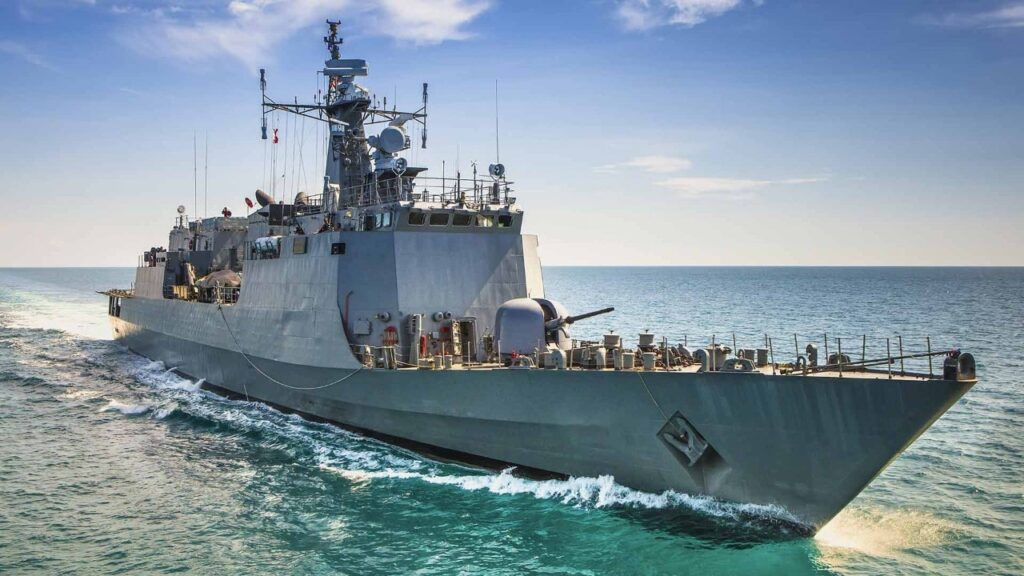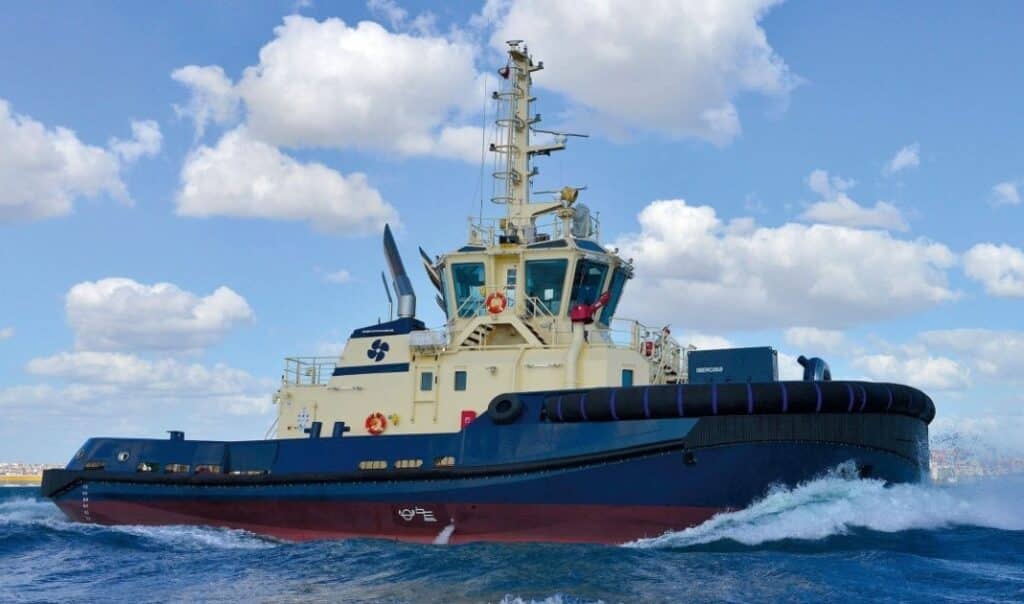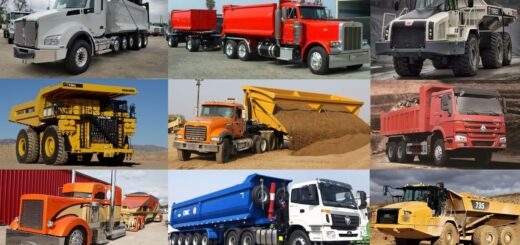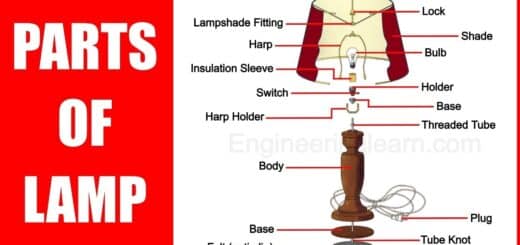20 Types of Ships – Explained with Complete Details [with Pictures & Names]
![20 Types of Ships - Explained with Complete Details [with Pictures & Names]](https://engineeringlearn.com/wp-content/uploads/2022/08/Ships-1024x539.jpg)
Introduction
20 Types of Ships – Explained with Complete Details [with Pictures & Names]: – A ship is a big boat that navigates the oceans and other sufficiently deep rivers, transporting goods or people, or assisting in specialised tasks like fishing, research, and defence. (Types of Boats)
In general, depending on size, shape, load capacity, and purpose, ships can be distinguished from boats. 90% of all the goods, commodities, and products that people require are currently transported by the more than 50,000 ships that are currently in use worldwide.
The present boats are profoundly modern, as route controlled spans and enormous motor spaces for the hardware that drives the vessel. Freight ships have somewhat little units, while voyage ships have countless units to help the travellers.
Current oceanic business vessels come in various shapes and sizes and are intended to convey a wide assortment of freight. Aside from this, there are different boats about which individuals don’t know. To see this, the principal sorts of boats and their capabilities are momentarily portrayed in this article.
Different Types of Ships
Following are the main types of ships that are travel worldwide:
- Container ships
- Bulk carrier ships
- Fishing vessels
- Dredgers
- High-speed craft
- Gas carriers
- Offshore ships
- Passenger ships
- Naval ships
- Livestock carriers
- Roll-on Roll-Off ships
- Tanker ships
- Heavy life ships
- Yacht
- Tugs
- Submarine
- Hovercraft
- Sailboat
- Barge
- Canoe
1. Container Ships: ( Types of Ships )

These ships are intended specifically to transport products in containers, as their name implies. A process known as containerization allows container ships to transport all of their cargo in intermodal containers the size of a truck.
These are the standard method for business freight transport and presently convey most marine non-mass freight. By and large, these boats are computerized and stack and dump with gantry cranes. Right now, 90% of non-mass merchandise overall are moved by compartment ships. The opponent unrefined petroleum big hauler is presently the main business sort of compartment transport.
2. Bulk Carrier Ships: ( Types of Ships )

Bulk carriers are commercial ships that transport dry commodities in large quantities, including cement, steel coils, grain, coal, ore, and other such items. In 1852, the first special bulk carriers were constructed. Bulk carriers are renowned for their high carrying capacities, security, effectiveness, and sturdiness.
Regardless of this, freight stacking activities can fluctuate, and stacking and dumping freight can require a few days. Mass transporters might be gearless, depend on terminal hardware, or some of the time fitted with a crane basic to the boat. These days, beef transporters make up 21% of the world’s shipper armada and are accessible in size, from single-hold small scale mass transporters to monster mineral boats.
3. Finishing Vessels: ( Types of Ships )

A fishing vessel is used for fishing at sea, on a lake, or in a river, as the name suggests. A conical net is used by a fishing boat to draw fish through or down the water and into the net. There are numerous varieties that are used for both professional and recreational fishing.
The complete number of fishing vessels on the planet in 2016 was around 4.6 million. It is hard to gauge as they range in size from little dinghies to huge contract cruisers and, in contrast to business fishing vessels, are frequently not committed exclusively to fishing. Fishing vessels are essentially arranged into two kinds which are fishing vessels and non-voyaging vessels.
4. Dredgers: ( Types of Ships )

A dredger’s main job is to clear the ocean floor, inlet streams, and rivers of accumulated sediments like sand, silt, and gravel. To put it simply, they are vessels outfitted with machinery for excavating deposits from the ocean floor, such as sand and other materials.
These boats are utilized for some reasons, for example, exploring shallow waterfront regions, remote ocean mining, and so on. Normal kinds of dredgers incorporate basic fly lift and airdrop, drill attractions, pneumatic and land and/or water capable dredgers.
5. High-Speed Craft: ( Types of Ships )

High-speed ships employ air pressure to go over water at high speeds, and they are propelled by engines and turbine propellers. From the moment they were introduced, these ships were fashionable, and that trend has continued.
These kinds of boats are progressed, elite execution (typically rapid) marine vessels intended for regular citizen use, otherwise called a quick yachts. The majority of these advancements are not utilized in business ships. Basically high velocity creates act as traveller ships.
6. Gas Carriers: ( Types of Ships )

A vessel designed to transport LPG, LNG, CNG, or liquefied chemical gases in bulk is referred to as a gas carrier. It is also referred to as an LPG carrier or LNG carrier. They are designed to transport low-temperature, liquid gases between terminals with completely chilled storage tanks. The presence of spherical tanks above the main deck is one of their best features.
LNG gas transporters contrast extraordinarily in that they have enormous roundabout tanks on their deck. They are accessible in 4 unique kinds of tanks: free tank, film tank, necessary tank, and semi layer tank. Then again, compound freight ships have numerous tanks to safeguard them from blending the various substances they convey.
7. Offshore Ships: ( Types of Ships )

The primary purposes of offshore ships are oil exploration and marine building. Offshore vessels come in a wide variety. Additionally, when necessary, these ships offer crew members transit and rest time to and from the high seas operations zones.
As verified over, the term seaward vessels is an aggregate setting and incorporate a large number of vessels utilized in the district of the great oceans. These boats are normally 50 to 100 meters (160 to 330 ft.) long and perform different undertakings like strategic help and transportation of products, gear, and hardware.
8. Passenger Ships: ( Types of Ships )

The main purpose of passenger ships, often known as cruise ships, is to transport passengers from one location to another. Cruise ships, as opposed to seaplanes, are typically utilised for round-trip excursions to numerous ports where guests can take tours.
Current sorts of traveller ships have less structure strength, speed, and nimbleness than seagoing boats. In spite of the fact that they have added offices to take care of water travellers, late ships have been depicted as “drifting condos loaded down with galleries”. For the most part, journey ships do a few evenings or more full circle trips without visiting any port.
9. Naval Ships: ( Types of Ships )

It is a navy-used military vessel. Naval ships, which include several varieties of battleships, destroyers, and corvettes, are big, heavily armed surface ships primarily geared to confront opposing forces on the high seas.
These are separated from non-military personnel ships by development and reason. These boats are harm safe and outfitted with weapon frameworks, albeit the deadly implement on military vehicle is light or non-existent. They were planned fundamentally for maritime fighting and are called warships.
10. Livestock Carriers: ( Types of Ships )

A big ship called a “livestock carrier” is used to export sheep, cattle, and goats alive. Usually, these ships are either newly constructed or repurposed container ships. Ample ventilation, food, and water are important requirements for transporting animals.
Domesticated animals transporters are expected to convey sufficient nourishment for the creatures during the excursion and enough stock for crises. Normal domesticated animals transporters have a conveying limit of around 30,000 to 40,000 sheep (or 3000 to 4000 head of steers). Animal transporters regularly venture to every part of the Middle East among Australia and New Zealand.
11. Roll-on Roll-Off Ships: ( Types of Ships )

Wheeled cargo is transported on and off of ships that are designated for this purpose. Wheeled cargo is simply any vehicle that is moved onto or off of a ship using its wheels, including cars, motorcycles, trucks, buses, and railroad cars.
Roll-on roll-off ships appear differently in relation to lift-on/lift-off (LOLO) ships, which use cranes to stack and dump freight. RORO ships have either underlying or shore-based inclines or ship slips that permit freight to proficiently be moved here and there the vessel. The word RORO is for the most part utilized for enormous maritime vessels.
12. Tanker Ships: ( Types of Ships )

Large quantities of liquids or gases that have been stored can be transported on tanker ships. Based on the cargo they carry; tanker ships are further divided into various types. The three main categories are gas carriers, chemical tankers, and oil tankers.
Aside from their applications, these boats likewise convey products like vegetable oil, molasses, and liquor. In the United States Navy, a big hauler used to refuel different boats is called an oiler. Big haulers can run in size from a few hundred tons in limit with regards to significant distance transportation.
13. Heavy Lift Ships: ( Types of Ships )

A heavy-duty ship, as its name suggests, is a vessel built to transport large industrial components that standard ships cannot. They are enormous ships that can transport other ships, substantial industrial facilities, floating factories, etc.
For instance, these boats transport seaward stages from their building locales to penetrating destinations. Some are outfitted with high-limit cranes for stacking at ports without the massive limit. Also, some permit the freight to drift ready before the boat lifts the freight out of the water.
14. Yacht: ( Types of Ships )

A yacht is a sailing or powered boat that is used for cruising, racing, or other leisure activities. These ships are equipped with a cabin that can be used for overnight stays. The vessel may be deemed to have good aesthetic attributes and be at least 33 feet (10 metres) in length.
These are fuelled by electrical power, given by an engine driven alternator or a battery re-energized by the engine. There are chiefly two sorts of yachts accessible; Racing yachts are intended to underline execution over solace, and sanction boats are run as a for-benefit business.
15. Tugs: ( Types of Ships )

A marine tug is a ship that pushes or pulls another ship along a direct contact or tow line. Typically, these boats tow ships that are unable to sail well on their own, such as in congested harbours or small canals.
Current pulls are exceptionally flexibility, with pulling power that can surpass 100 tons. Early pull models had steam motors, while present day ones had diesel motors. A few kinds of pulls are maritime, and some are icebreakers or salvage pulls. Many pulls convey downpour weapons, helping putting out fires, particularly harbors.
16. Submarine: ( Types of Ships )

A submarine, also referred to as a “sub,” is a boat with the ability to operate on its own underwater. An undersea submersible has only a few capabilities, in contrast to this. Large air-filled ballast tanks on submarines help them float on the surface of the ocean.
At the highest point of the weight tank are valves that are opened when the submarine is coordinated to lower. Most enormous submarines have a tube shaped body with cone like finishes, typically situated in the center, which houses correspondence and detecting hardware as well as periscopes. Submarines incorporate many sorts and abilities.
17. Hovercraft: ( Types of Ships )

A hovercraft is a floating vehicle that can traverse a variety of surfaces, including ice, mud, and water. A skirt is present on a hovercraft to hold air. This skirt forms a pocket that holds pressured air when the air blower is turned on. In order to travel ahead, a hovercraft needs pressured air.
These days, they are utilized overall for catastrophe help, Coast Guard, military, review applications, and specific vehicle for game or traveller administration. As the air cushion vehicle transcends the surface, there is no erosion between the skirt and the ground so it can travel flawlessly on the land.
18. Sailboat: ( Types of Ships )

A sailboat is a tiny sailing ship that is partially or entirely driven by sails. The boat is propelled across the water by the combined forces of the wind on the sail and the water on the submerged portions of the craft.
At the point when the breeze blows across the sails, the streamlined lift is made, similar as the wing of a plane. A few boats have engine propellers, which assist with impelling the boat in any event, when there is no wind.
19. Barge: ( Types of Ships )

A barge is a flat-bottomed riverboat that can move large amounts of freight. With the aid of a slow-rotating diesel engine and a fixed-pitch propeller with a big diameter, the barge is capable of moving itself.
The barges were initially drawn by draught horses down a nearby towpath. Other kinds of barges need to be pushed or pulled by pusher boats. As the pushing tug joins the unit and contributes to the movement of the entire, the pusher system has better handling and is more effective than towed barges.
20. Canoe: ( Types of Ships )

A canoe is a small, open boat that is typically pointed at both ends. These are normally propelled by one or more paddlers using single-bladed paddles while seated or kneeling and facing the direction of travel.
Presently, kayaks are broadly utilized for contest and joy, like hustling, whitewater, visiting and setting up camp, free-form, and general diversion. Most current kayaks are shaped plastics or composites like fiberglass or Kevlar or consolidating graphite. The planned utilization of still up in the air by their size, length, and development material.
Content Source: – safety4sea, wikipedia
Image Source: – marinetraffic, mes, vanoord, karatzas, britannica, wartsila, maritimegateway, ww2.eagle, foodnavigator, flickr, cgtn, heavyliftnews, boatinternational, mtu-solutions, bloomberg, outlookindia, lifeofsailing, wikimedia, outdooraccess












